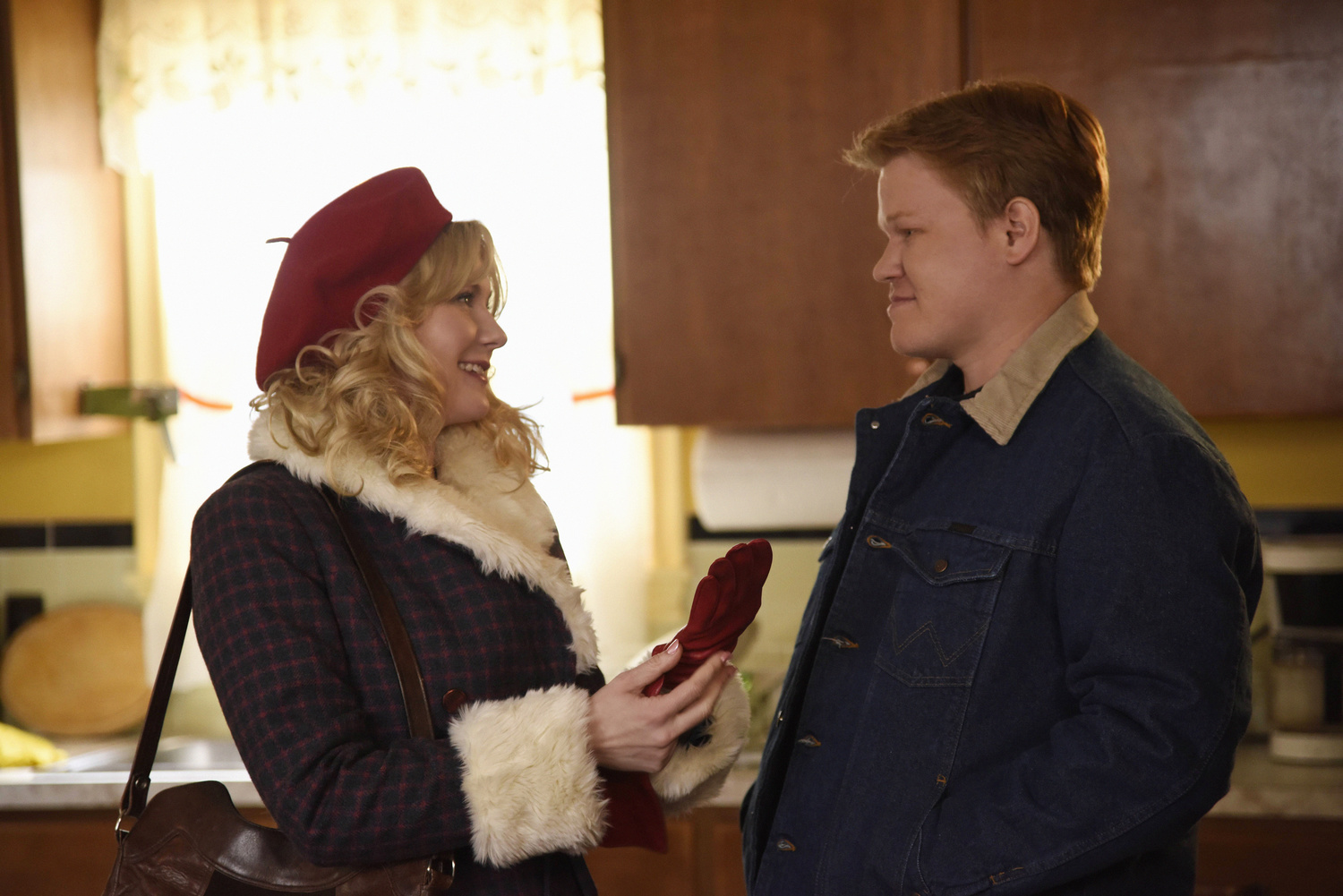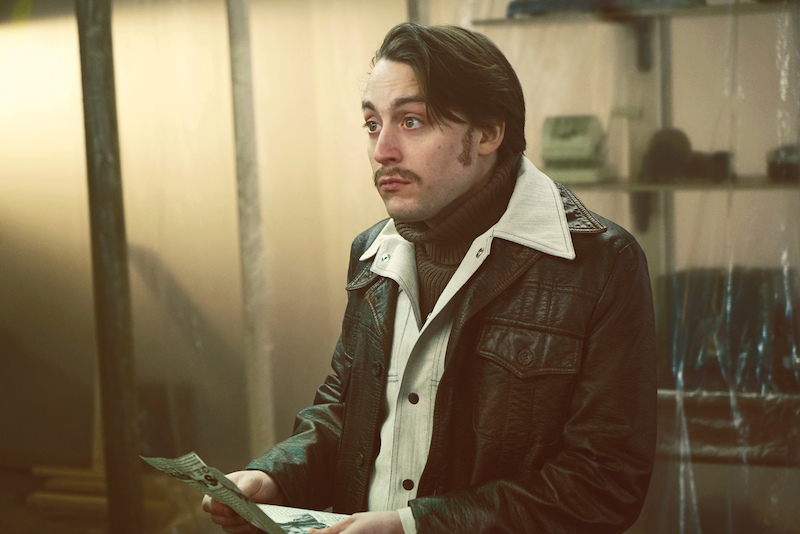By providing your information, you agree to our Terms of Use and our Privacy Policy. We use vendors that may also process your information to help provide our services. This site is protected by reCAPTCHA Enterprise and the Google Privacy Policy and Terms of Service apply.
Review: ‘Fargo’ Season 2 Episode 1 ‘Waiting for Dutch’ Shows How Small Crimes Can Cause Big Problems


“This Is a True Story”
We know now — after a memory lapse last year — that “Fargo” is not, in fact, based on facts. It’s a coy play on a fictitious tale that still manages to feel real, despite some truly oddball antics and extreme scenarios. That authenticity carved out of a mad world is what we were looking for in a very-nearly brand new Season 2 story, and it’s exactly what was delivered tonight. Noah Hawley masterfully sets the stage for what’s to come, introducing the common elements making up a “Fargo” story and setting them on a collision course.
First and most destructive early on is Rye Gerhardt (Rory Culkin), a baby brother with a bad case of short-man syndrome who, after stealing money from his family, tries to threaten a judge into overturning an order for his investment partner. This beautifully captured confrontation ending in bloodshed — both innocent and otherwise — leads us to our old friend (now young) Lou Solverson, the state trooper played by a man who was born to portray a clean-cut hero type, Patrick Wilson. Solverson, whose daughter, Molly, was the archetypical hero of Season 1, passes the triple-homicide with a missing murderer off to his father-in-law, local sheriff Hank Larsson (Ted Danson) after an exchange of theories at the scene (though it seems safe to say Lou’s involvement in the case is far from over).
READ MORE: Review: ‘Fargo’ Season 2 Evolves Beyond Antihero Tropes (And Finds Its Smile)
From there, it’s slowly revealed who ran into Rye as he was fleeing the scene. Turns out the seemingly-peaceful Peggy (Kirsten Dunst) not only smashed into the criminal (after he wandered into the road chasing a UFO, of all things), but she drove him all the way home with the body still wedged into her windshield. Her clueless but good-natured husband, Ed (Jesse Plemons), finds this out the hard way, when Rye makes too much noise trying to escape before losing a knife fight with Ed. Peggy talks her husband into covering up the crime, and the two are now part of a much bigger brouhaha than they could even imagine.
All of this, meanwhile, is excluding a black-and-white opening from behind-the-scenes of an old Ronald Reagan film titled “Massacre at Sioux Falls,” a brewing war between North and South crime syndicates and more Northern accents than I could count, let alone local colloquialisms. Yet somehow even the strangest moments of “Fargo” felt honest. Helped along by an appreciated attention to detail — from the late ’70s aesthetics to deep character knowledge provided in a matter of moments (think back to how you know Peggy doesn’t want a baby) — “Waiting for Dutch” shared by showing and rewarding an attentive audience, making for one heckuva introduction to Season 2. Let’s dig in.
The Lorne Malvo Award for MVC (Most Valuable Character)
In a sea of enticing players, Nick Offerman’s Carl stood out for his passion and purpose. Setting aside our past appreciation of the “Parks and Rec” favorite, Carl proved to be the perfect medium for framing and grounding an expansive story. Formerly connecting our pure-of-heart hero, Lou, with some justifiable Vietnam-era paranoia, Carl spoke the most fateful words of a telling first hour: “Oh sure. That’s how it starts: with something small, like a break-in at the Watergate Hotel. But just watch. This thing is only getting bigger.” One of the most exciting elements of “Fargo” is how it forces people you actually want to root for (traditional heroes, some would say) into situations you instinctively want them to avoid, but know that’s where we need them to be. Alison Tolman’s Molly and her future husband Gus (Colin Hanks) took up the mantle last season. Now it’s Lou’s turn to face the road he shouldn’t go down, likely to meet the Gerhardts and the Southern syndicate at its end. This thing is only going to get bigger.
The Alison Tolman Award for MVA (Most Valuable Actor)
 Okay, when did everyone realize Kirsten Dunst was a great actress? Was it when she was a child star in “Interview With a Vampire”? A teen breakout in “Bring It On”? A dramatic powerhouse in “Melancholia”? (That was mine.) Or was it tonight, when she conveyed so much in such a small amount of screen time as Peggy? Granted, we learned a lot about the housewife from what was on the page — the timing of her car driving on down the road after smashing into Rye was something else — but her scene at the dinner table, before we even knew she was behind the wheel of the murder-mobile, already makes her Emmy-worthy. From “Hon, you’re getting blood on the tile” foreshadowing her warped priorities, to her so-carefully-repressed skittishness in regard to making a family with her husband, every moment of the couple’s pre-stabbing time together was rich with development — and much of it was thanks to Dunst’s layered portrayal.
Okay, when did everyone realize Kirsten Dunst was a great actress? Was it when she was a child star in “Interview With a Vampire”? A teen breakout in “Bring It On”? A dramatic powerhouse in “Melancholia”? (That was mine.) Or was it tonight, when she conveyed so much in such a small amount of screen time as Peggy? Granted, we learned a lot about the housewife from what was on the page — the timing of her car driving on down the road after smashing into Rye was something else — but her scene at the dinner table, before we even knew she was behind the wheel of the murder-mobile, already makes her Emmy-worthy. From “Hon, you’re getting blood on the tile” foreshadowing her warped priorities, to her so-carefully-repressed skittishness in regard to making a family with her husband, every moment of the couple’s pre-stabbing time together was rich with development — and much of it was thanks to Dunst’s layered portrayal.
“Aw, Heck.”
 (This section highlights the unexpected trouble “Fargo” regularly showcases, usually to tragic or comedic ends.)
(This section highlights the unexpected trouble “Fargo” regularly showcases, usually to tragic or comedic ends.)
Oh, poor Henry Blanton. The former high school football star-turned-diner cook had the right intentions when he went after Rye with a frying pan, but maybe he should’ve kept his war cry in check, as not to tip off the man with a gun. And while the Judge’s death was pretty predictable (though still tragic), the waitress’s prolonged death surpassed Henry’s on the sadness scale. Her doomed escape attempt into the snowy plains outside at least provided a properly painful (and even more drawn out) death for her killer, but the formal highlight had to be the framing device used by Hawley and directors Michael Uppendahl and Randall Einhorn to show just how quickly things can go from “everyday” to “worst day ever.” As Rye fired his shots, the devastating consequences all played out in the time it took the door pushed by Henry swung open and shut. Beautifully-captured violence is still ugly, it turns out, but boy is it better than the alternative.
“Aces!”
(This section highlights the unexpected glee “Fargo” regularly showcases, teased by tragedy or humorous beginnings.)
“Okay then.” In an episode light on frivolity, the three-person exchange at Ed’s butcher shop eventually served as a poignant reminder of what’s at stake for this well-meaning man. He could permanently lose the innocence of such a simple exchange, if he hasn’t already. But when we watched it in real-time, it was just funny. Try to find that feeling again in the above teaser.
Northern Exposure
(This section highlights the obscure local customs brought to focus by this Northern-set series.)
I could find no immediate evidence that the word “coaster” — used by the judge to describe a burger she found unsatisfactory — has a distinct definition in the Northern United States. Most likely, it was just a witty way of putting down a piece of meat that’s only use, after being rendered inedible by overcooking, is as a coaster. Until that’s confirmed by some Minnesota natives I know — or commenters below — I’m going to use it strictly as a term for poorly-cooked meat. I mean, come on: “coastah.” It’s really fun to say in that accent.
Quote of the Night

Okay, the above quote is simply too good to ignore, especially for this section, but what I really want to talk about is what’s coming because of a much shorter, much less memorable word: “Approved.” After all the violence, death and surprises making up this story’s middle portion, it was easy to forget about the Gerhardt family’s larger goals as well as their incoming threat from an unknown southern syndicate. When we finally get to see them — or at least Brad Garrett — their outfit is a perfect blend for “Fargo”: Surprisingly professional by design and frank in their objectives, the presentation of the “Kansas City Northern Expansion Strategy, 1979-1980” laid out an objective to destroy the smaller family business operating illegally since 1931. The scene was both humorous in concept and daunting in execution, while also giving a voice to the “them” Carl described to Lou earlier in the episode, This group is how the situation outlined in the episode is going to get bigger, and we all should be very, very afraid. Good luck, Lou. You’ll need it.
Grade: A
By providing your information, you agree to our Terms of Use and our Privacy Policy. We use vendors that may also process your information to help provide our services. This site is protected by reCAPTCHA Enterprise and the Google Privacy Policy and Terms of Service apply.

















